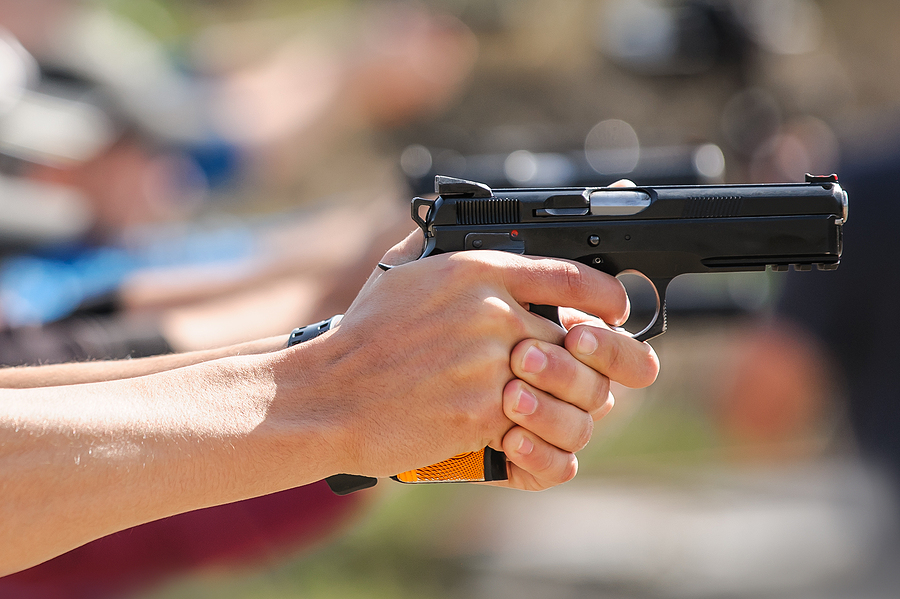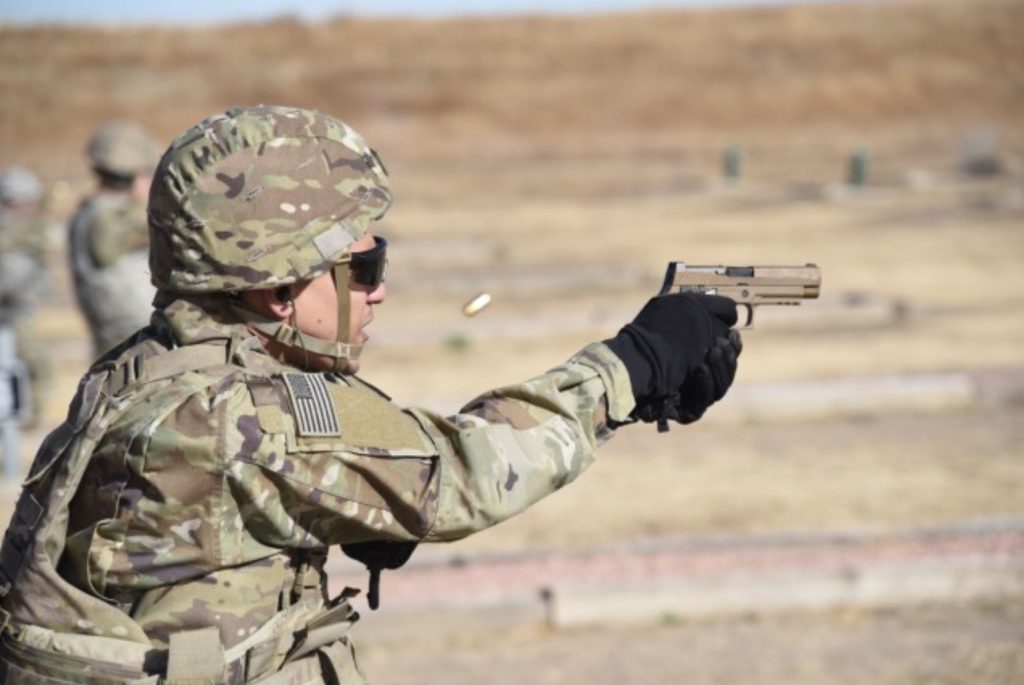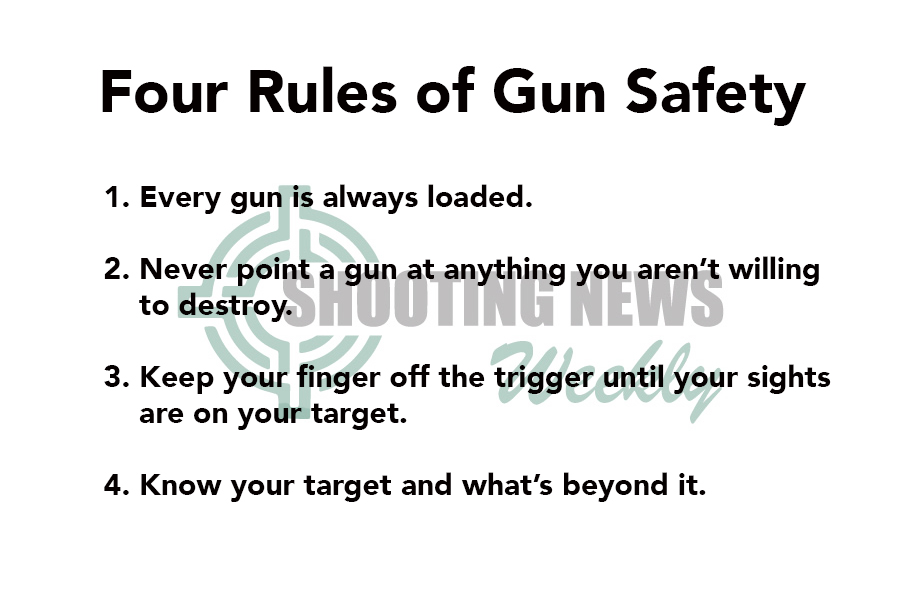
Is it possible to follow all the rules of firearms safety and still be injured or killed on the training range? Some will say “yes, of course” while others will respond “no, if someone gets hurt it’s because someone broke the rules.”
While I hate like hell to relate a third-hand report, reliable sources have informed me that our community just lost a member due to a negligent discharge that occurred while the shooter was trying to catch a fumbled pistol. Going back to my original question, which of the four Universal Firearms Safety Rules is violated when gravity takes hold and we try to grab a pistol that was fumbled?
Institutionalized Stupidity
While service in the United States military has numerous positive aspects and benefits, we must still acknowledge the very real syndrome of “institutionalized stupidity.” By this, I mean questionable behavior that is passed down from generation to generation without ever being examined critically.
When I was on Parris Island, the sound of an M-16A2 rifle clattering to the ground immediately elicited the command from a Drill Instructor to “Follow it!” Which meant follow that rifle to the ground and get into the push up position. Such a practice was standard and no one ever questioned it.
In the military — and not just during basic training — dropping a weapon is always followed by, at very least, ridicule from one’s peers and at worst discipline from any authority figure who happens to be present. Service members are conditioned from essentially Day One that dropping a weapon is the worst thing you can do. If you drop a weapon during a live fire training exercise you get kicked off the range or otherwise punished in some way.
The Deadly Results of Bad Training
While working as a small arms and tactics instructor for the US military during the GWoT, myself and the other veteran military contractors were brought in for a “safety stand-down” briefing. There had been a negligent death on one of the ranges overseen by our training command (not in my unit).
The investigation had determined that the service member in question, during the live fire M9 qualification course, had fumbled or lost control of his pistol in the middle of a string of fire. Rather than let it fall to the ground, he quickly reacted by snatching at the gun. Investigators believe his thumb — it doesn’t really matter which digit — got into the trigger guard and pressed the trigger. A single round discharged and passed through the man’s heart. He was dead before the Corpsmen could get him off of the range to treat him.
Veterans reading this will not be surprised that the officers at the top of the training command decided that the solution to prevent dropping or the effects of gravity was to institute an extra ten minutes of dry fire before the qualification course. I wish I was kidding.
Preprogrammed Response
What none of the people in the command structure seemed to realize is that trying to catch a dropped gun for fear of the resulting ridicule or punishment was a pre-programmed response built into every service member from the very beginning. The idea that adding ten minutes of dry fire was going to override years of conditioning was childishly stupid, but such is the syndrome of institutionalized stupidity.

When the previous incident took place I was not in a position to force a change at the top, but we instructors did institute the policy of telling our students at the very beginning of our training program to let a fumbled gun drop on our ranges. During three years of full-time training, we did indeed have a few students fumble a gun and let it go. Not one time did the gun discharge when it hit the ground. The line coach retrieved it, made sure the barrel wasn’t blocked with dirt or mud, and we moved on. The shooter was reminded that they did the right thing.
All of the above gave me pause to seriously consider the situation. The lesson for how to handle fumbling or losing control of a firearm isn’t just for beginners. Gravity affects everyone equally. Additionally, while you may have never been in the military, how about competition? I’ve been to shooting matches where dropping a gun was an automatic disqualification, but snatching at a fumbled gun was not. Perpetuating that kind of incentive is dangerous and reckless.
During the fraction of a second between the time the brain realizes that the gun has been fumbled to the decision-making process to either grab it or let it fall, there is no time to critically think about what to do. The response must be pre-programmed. The only way to override the previous pre-programmed desire to snatch at a fumbled gun is to replace that impulse with different programming.
Dropping Guns Deliberately
Many years ago, when I was training with my departed friend James Yeager, he had become famous for tossing his GLOCK 19 to reinforce the point to let all fumbled guns drop. He replaced a lot of front sights, but never ever did his gun discharge or break.
When it was time to develop the curriculum for Student of the Gun University, particularly the Martial Application of the Pistol course, we naturally included the late Colonel Jeff Cooper’s four Universal Firearms Safety Rules. The one thing that those rules do not address, however, is how to deal with the fumbled gun.

Someone suggested that we add “Drop all fumbled guns” and call that Rule #5 adding one to the Colonel’s list. I didn’t feel comfortable with that so we settled on “4 Rules Plus 1.” During our range safety briefings, we go over the four rules and then follow it with the “plus one” of let it drop.
However, we don’t stop there. It’s not enough for humans to robotically nod their heads in agreement when they hear an instruction. We have veterans of the military and veteran shooters in our classes, 99 percent of whom have been conditioned not to ever let a weapon hit the ground. And so, on day one of training during the first portion before lunch, every student is instructed to open their hands and let their gun fall to the ground.
This instruction actually does two things for the student. One, it begins to re-wire them to keep them from negligently killing themselves or the guy next to them by trying to snatch a fumbled gun and two, it might keep them alive on the street.
What!?
We teach good people to use guns to defend innocent lives. When you use a gun to defend innocent life by shooting a deadly threat, in the aftermath you might hear an instruction from behind you, “Police, drop it!” Our students are reminded that if you do anything other than open your hands and drop that gun, the responding officers will shoot you, and that includes trying to bend over and gingerly place your pistol on the ground.
We HAVE to Learn from Mistakes
Was the individuals who lost his life snatching at fumbled gun a bad person? I highly doubt it. He was probably a great person who was loved by family and friends. But we can’t merely weep and mourn his loss. We have to learn from it.
The FAA investigates airplane crashes, not to crap on the pilots, but to determine what went wrong so that error can be eliminated so as not to repeat that kind of crash again. Any and all firearms training or competition shooting that neglects to include the “drop it” plus-one safety rule is reckless and negligent. We lose enough good people already each year without it being due to poor training or institutionalized stupidity.
Go forward and behave accordingly.
Paul G. Markel is a combat decorated United States Marine veteran. He is also the founder of Student the Gun University and has been teaching Small Arms & Tactics to military personnel, police officers, and citizens for over three decades.


Not sure how many reps it would take to prevent most people from trying to capture a bobbled gun.
Working in a shop, it is difficult for people not to chase dropped tools or working stock.
There is not only the risk of being cut by the tool/stock,but also bending down into a working machine.
It is our nature to try and save a fumble – from footballs to table ware.
I’ve seen a lot of guns dropped. The only time they were not chased was when the owner was unaware they were falling. I.e pushed out of an open topped holster.
I try tomhave the mindset not to grab a falling gun (Or knife).
Done enough shopwork to not try for a knife or tool (read as – been cut).
Not sure about bobbling a gun.
Not sure dropping a gun to watch it fall replicates bobbling a gun while in use.
“However, we don’t stop there. It’s not enough for humans to robotically nod their heads in agreement when they hear an instruction.”
Mental assent is not enough. Knowledge is that which moves one to action or in the case of a falling gun/knife inaction. Changing decades of habits is not easy, but in this case is the best policy.
“which of the four Universal Firearms Safety Rules is violated when gravity takes hold and we try to grab a pistol that was fumbled?”
The unwritten part of each rule thats built into and implied in each rule that says ‘don’t be stupid”
Mud, blood and sweat plus gravity can lead to unintended consequences, it’s not all stupid… But yeah.